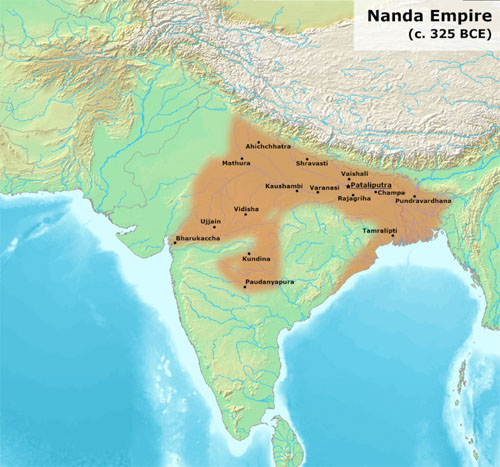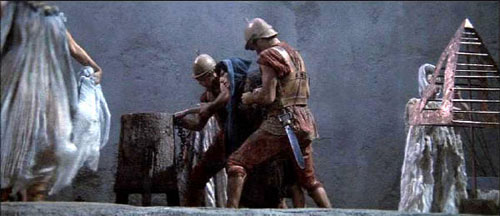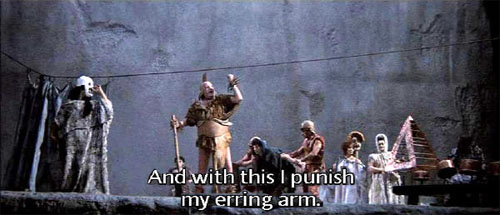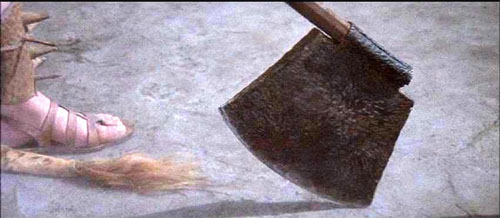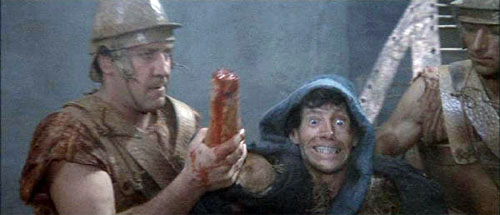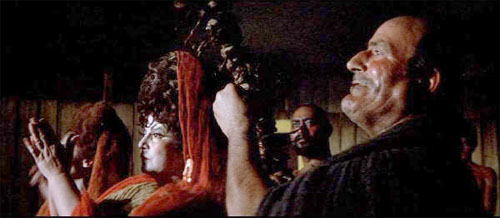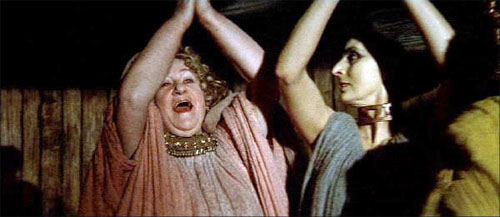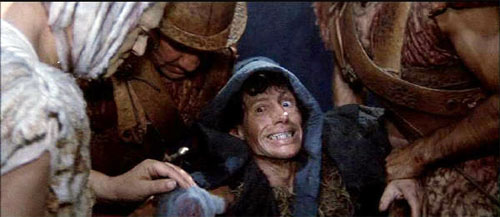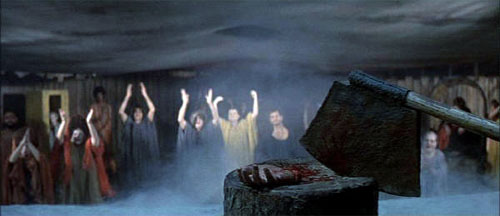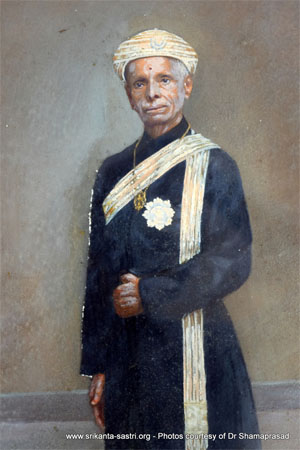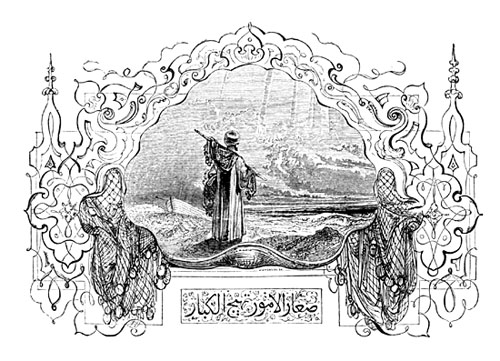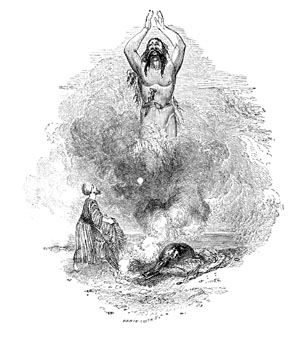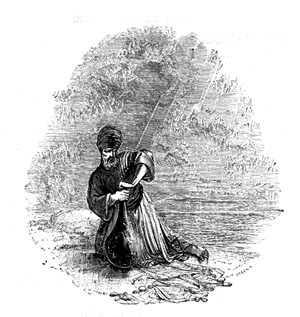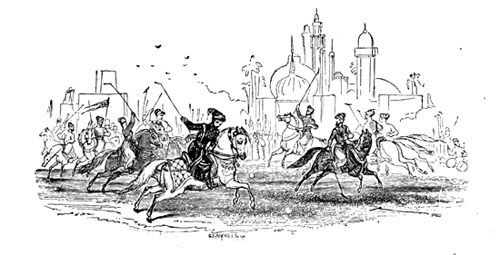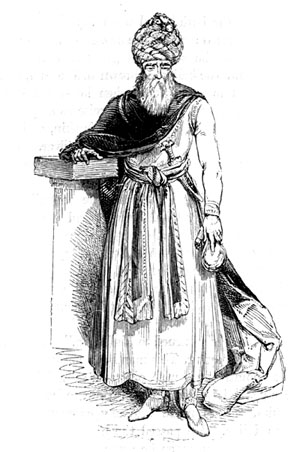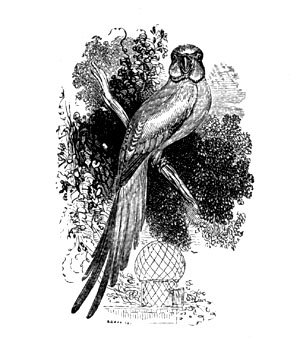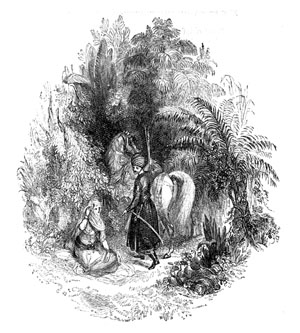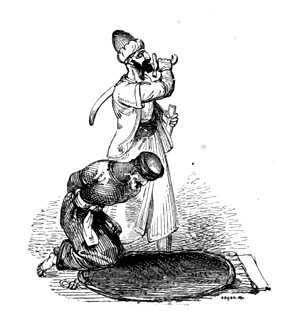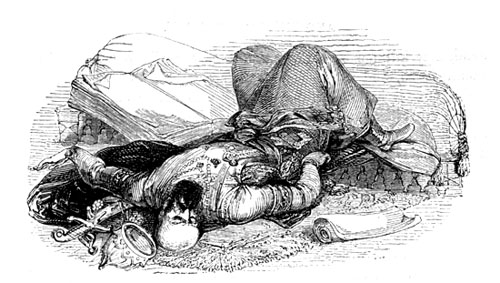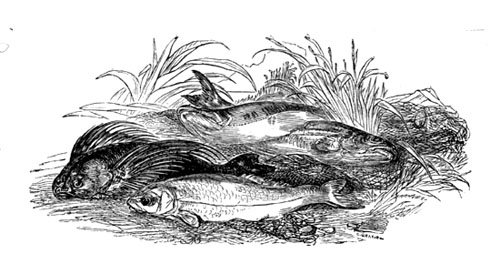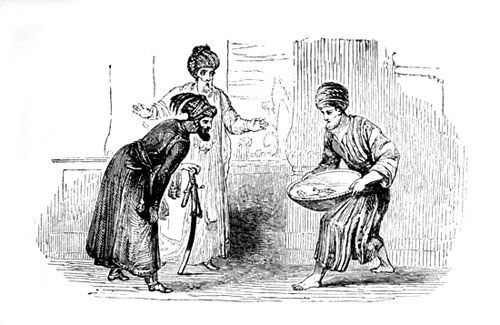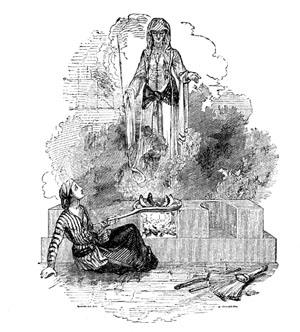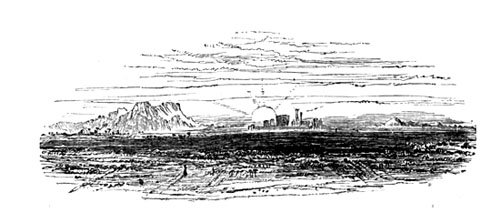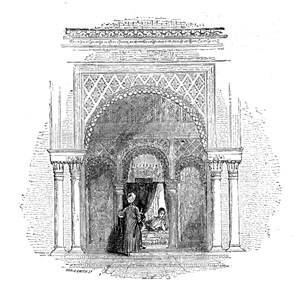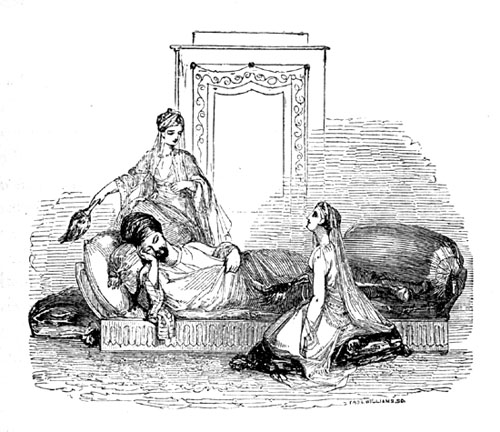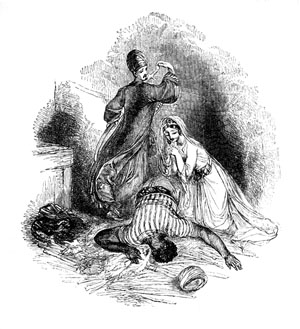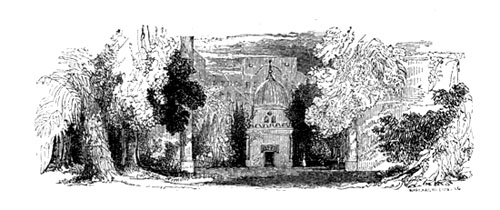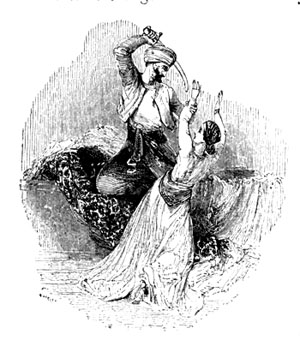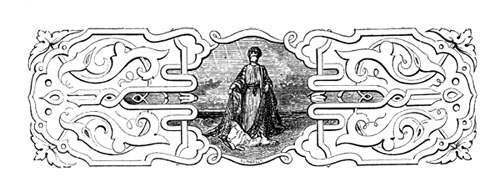Chanakya
by Wikipedia
Accessed: 6/9/21
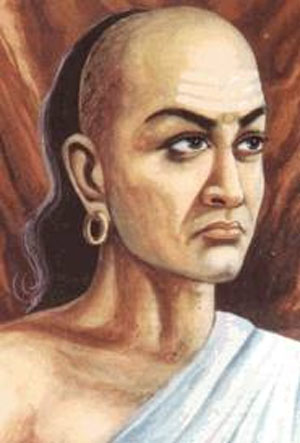
Chanakya
Chanakya, artistic depiction
Born 375 BCE, Chanaka village in Golla region (Jain legends);[1]
or in Takshashila (Buddhist legends)[2]
Died 283 BCE, Pataliputra, Maurya Empire
Occupation Teacher, Philosopher, Economist, Jurist, advisor of Chandragupta Maurya
Known for Prominent role in the foundation of the Maurya Empire & Arthashastra, Chanakyaniti
Chanakya (IAST: Cāṇakya, About this soundpronunciation (help·info)) was an ancient Indian teacher, philosopher, economist, jurist and royal advisor. He is traditionally identified as Kauṭilya or Vishnugupta, who authored the ancient Indian political treatise, the Arthashastra,[3] a text dated to roughly between the 4th century BCE and the 3rd century CE.[4] As such, he is considered the pioneer of the field of political science and economics in India, and his work is thought of as an important precursor to classical economics.[5][6][7][8] His works were lost near the end of the Gupta Empire in the 6th century CE and not rediscovered until the early 20th century.[6]
Chanakya assisted the first Mauryan emperor Chandragupta in his rise to power. He is widely credited for having played an important role in the establishment of the Maurya Empire. Chanakya served as the chief advisor to both emperors Chandragupta and his son Bindusara.
Background
Sources of information
There is little documented historical information about Chanakya: most of what is known about him comes from semi-legendary accounts. Thomas Trautmann identifies four distinct accounts of the ancient Chanakya-Chandragupta katha (legend):[9]
Version of the legend / Example texts
Buddhist version / Mahavamsa and its commentary Vamsatthappakasini (Pali language)
Jain version / Parishishtaparvan by Hemachandra
Kashmiri version / Kathasaritsagara by Somadeva, Brihat-Katha-Manjari by Ksemendra
Vishakhadatta's version / Mudrarakshasa, a Sanskrit play by Vishakhadatta
The Mahavamsa first came to the attention of Western readers around 1809 CE, when Sir Alexander Johnston, Chief Justice of the British colony in Ceylon, sent manuscripts of it and other Sri Lankan chronicles to Europe for publication. Eugène Burnouf produced a Romanized transliteration and translation into Latin in 1826... Working from Johnston's manuscripts, Edward Upham published an English translation in 1833, but it was marked by a number of errors in translation and interpretation, among them suggesting that the Buddha was born in Sri Lanka and built a monastery atop Adam's Peak. The first printed edition and widely read English translation was published in 1837 by George Turnour, an historian and officer of the Ceylon Civil Service…
Historiographical sources are rare in much of South Asia…
The Mahavamsa has, especially in modern Sri Lanka, acquired a significance as a document with a political message. The Sinhalese majority often use Manavamsa as a proof of their claim that Sri Lanka is a Buddhist nation from historical time…
Early Western scholars like Otto Franke dismissed the possibility that the Mahavamsa contained reliable historical content…
Wilhelm Geiger was one of the first Western scholars to suggest that it was possible to separate useful historical information from the mythic and poetic elaborations of the chronicle…. Geiger hypothesized that the Mahavamsa had been based on earlier Sinhala sources that originated on the island of Ceylon. While Geiger did not believe that the details provided with every story and name were reliable, he broke from earlier scholars in believing that the Mahavamsa faithfully reflected an earlier tradition that had preserved the names and deeds of various royal and religious leaders, rather than being a pure work of heroic literary fiction. He regarded the early chapters of the Culavamsa as the most accurate, with the early chapters of the Mahavamsa being too remote historically and the later sections of the Culavamsa marked by excessive elaboration.
Geiger's Sinhala student G. C. Mendis was more openly skeptical about certain portions of the text, specifically citing the story of the Sinhala ancestor Vijaya as being too remote historically from its source and too similar to an epic poem or other literary creation to be seriously regarded as history. The date of Vijaya's arrival is thought to have been artificially fixed to coincide with the date for the death of Gautama Buddha around 543 BCE. The Chinese pilgrims Fa Hsien and Hsuan Tsang both recorded myths of the origins of the Sinhala people in their travels that varied significantly from the versions recorded in the Mahavamsa…
The story of the Buddha's three visits to Sri Lanka are not recorded in any source outside of the Mahavamsa tradition. Moreover, the genealogy of the Buddha recorded in the Mahavamsa describes him as being the product of four cross cousin marriages. Cross-cousin marriage is associated historically with the Dravidian people of southern India -- both Sri Lankan Tamils and Sinhala practiced cross-cousin marriage historically -- but exogamous marriage was the norm in the regions of northern India associated with the life of the Buddha. No mention of cross-cousin marriage is found in earlier Buddhist sources…
The historical accuracy of Mahinda converting the Sri Lankan king to Buddhism is also debated. Hermann Oldenberg, a German scholar of Indology who has published studies on the Buddha and translated many Pali texts, considers this story a "pure invention". V. A. Smith (Author of Ashoka and Early history of India) also refers to this story as "a tissue of absurdities". V. A. Smith and Professor Hermann came to this conclusion due to Ashoka not mentioning the handing over of his son, Mahinda, to the temple to become a Buddhist missionary and Mahinda's role in converting the Sri Lankan king to Buddhism, in his 13th year Rock Edicts, particularly Rock-Edict XIII. Sources outside of Sri Lanka and the Mahavamsa tradition do not mention Mahinda as Ashoka's son….
The Mahavamsa is believed to have originated from an earlier chronicle known as the Dipavamsa... The Dipavamsa is much simpler and contains less information than the Mahavamsa and probably served as the nucleus of an oral tradition that was eventually incorporated into the written Mahavamsa. The Dipavamsa is believed to have been the first Pali text composed entirely in Ceylon.
-- Mahavamsa, by Wikipedia
His [Hemachandra's] date of birth differs according to sources but 1088 is generally accepted...
Probably around 1125, he was introduced to the Jayasimha Siddharaja (fl. 1092–1141) and soon rose to prominence in the Chaulukya royal court. According to the Prabhavakacarita of Prabhācandra, the earliest biography of Hemachandra,...Prabhācandra (c. 11th century CE) was a Digambara monk,grammarian,philosopher and author of several philosophical books on Jainism.
Prabhachandra was a Digambara monk who flourished in 11th century CE. He denied the possibility of any genuine intensity of action, whether good or bad, on the part of women.
According to him, Kumarapala converted to Jainism and started worshipping Ajitanatha after conquering Ajmer.
-- Prabhācandra, by WikipediaMultiple legendary biographies by medieval Jain chroniclers present him [Kumarapala] as the last great royal patron of Jainism.
Sources of information
Kumarapala was well known for his patronage of Jainism, and several medieval Jain scholars wrote chronicles about him. These scholars include Hemachandra (Dvyashraya and Mahaviracharita), Prabhachandra, Somaprabha (Kumarapala-Pratibodha), Merutunga (Prabandha-Chintamani), Jayasimha Suri, Rajashekhara and Jina-Mandana Suri, among others. Of all the Indian kings, the largest number of chronicles have been written about Kumarapala. However, these chronicles differ substantially in important details about his life...
According to Merutugna, Kumarapala was a descendant of Bhima I through Haripala and Tribhuvanapala. Haripala was a son of Bhima and a concubine named Bakuladevi. Merutunga's genealogy seems to be historically inaccurate, as the fragmentary Chittorgarh inscription corroborates Hemachandra's genealogy. However, historian A. K. Majumdar notes that the voluntary rejections of thrones are very rare, and therefore, Hemachandra's claim of Kshemaraja having voluntary give up his throne is doubtful. Hemachandra, who was a royal courtier, probably invented a fictional narrative to avoid mentioning the illegitimate son Haripala. This also explains why Karna's son Jayasimha Siddharaja hated Kumarapala....
Kumarapala's contemporary chronicler Hemachandra does not mention anything about the king's life before his ascension to the throne. This is unusual, because Hemachandra's narratives about other kings of the dynasty describe their early lives. Historian Ashoke Majumdar theorizes that this might be because Hemachandra played a significant role in Kumarapala's early life, as mentioned by later chroniclers. Yashahpala, another contemporary writer, provides a hint about the king's early life in his drama Maharaja-Parajaya. In this play, a character states that Kumarapala "wandered alone through the whole world", suggesting that the king spent his early life wandering away from the royal court.
Prabhachandra provides the following account of Kumarapala's early life: One day, Jayasimha Siddharaja learned through divination that Kumarapala would be his successor. This made Jayasimha very angry, because he hated Kumarapala. Fearing for his life, Kumarapala fled the kingdom in form of a mendicant. Sometime later, Jayasimha's spies told him that Kumarapala had returned to the capital disguised as an ascetic. Jayasimha then invited 300 ascetics to a feast, and washed their feet in order to identify Kumarapala (who had royal marks on his feet). Kumarapala was recognized, but fled to Hemachandra's house before he could be arrested. Jayasimha's men followed him, but Hemachandra hid him under palm leaves. After leaving Hemachandra's house, Kumarapala was similarly saved by a farmer named Āli. He then went to Khambhat, accompanied by a Brahmin named Bosari. There, he sought shelter with a rich man named Udayana, who turned him away to avoid enmity with the king Jayasimha. Fortunately for Kumarapala, Hemachandra had also arrived at a Jain monastery in Khambhat. Hemachandra gave him food and shelter, and predicted that he would become the king after 7 years. The Jain scholar also took 3,200 drammas (gold coins) from a Jain layman, and gave them to Kumarapala. Subsequently, Kumarapala spent years traveling as a Kapalika ascetic, before being joined by his wife Bhopaladevi and their children. When Jayasimha died, Kumarapala returned to the capital and met Hemachandra. The next day, he arrived at the royal palace, accompanied by his brother-in-law Krishna-deva, who commanded 10,000 horses. There, he was proclaimed as the new king after two other claimants were rejected.
Merutunga mentions a similar legend...
The historicity of these legendary narratives is debatable...the greater part of the legendary narratives appears to be fanciful...
The Jain chroniclers provide highly exaggerated accounts of the territorial extent of Kumarapala's kingdom. For example, Udayaprabha claims that Kumarapala's empire included Andhra, Anga, Chauda, Gauda, Kalinga, Karnata, Kuru, Lata, Medapata, Maru, and Vanga. Such claims are of little historical value....
Kumarapala waged war against a ruler of Saurashtra. Later chroniclers such as Merutunga, Jayasimha Suri and Jina-Mandana state that Kumarapala's army was led by Udayana, who was mortally wounded during this campaign. However, this claim appears to be incorrect, as the earlier writer Prabachandra states that Udayana died fighting Navaghana of Saurashtra during the reign of Jayasimha Siddharaja.
The later writers seem to have confused Jayasimha's Saurashtra campaign with that of Kumarapala. Kumarapala's Saurashtra campaign was probably against the Abhiras....
The historicity of these legends is doubtful, as they claim that Hemachandra had the supernatural power to...
However, these accounts do not appear to be historically accurate. Ajayapala was a follower of Brahmanism, because of which the later Jain chroniclers portrayed him in a negative light....
While several legendary chronicles state that he met the Jain scholar Hemachandra early in his life, the historical accuracy of this claim is doubtful...
The later legendary accounts of Kumarapala's conversion to Jainism are too fanciful to be true. For example, Merutunga claims that Hemachandra made the god Shiva appear before Kumarapala at the Somanatha temple. Shiva told Kumarapala that Hemachandra was an incarnation of all the gods....
The Jain chronicles state that Kumarapala banned animal slaughter, alcohol, gambling and adultery after his conversion to Jainism. However, no extant inscriptions issued by the king announce any such ban....
Although Jain accounts unanimously state that Kumarapala converted to Jainism, none of the king's extant inscriptions invoke Jain deities....
-- Kumarapala (Chaulukya dynasty), by Wikipedia
Jayasimha spotted Hemachandra while passing through the streets of his capital. The king was impressed with an impromptu verse uttered by the young monk.
In 1135, when the Siddharaja conquered Malwa, he brought the works of Bhoja from Dhar along with other things. One day Siddhraja came across the manuscript of Sarasvati-Kanthabharana (also known as the Lakshana Prakash), a treatise on Sanskrit grammar. He was so impressed by it that he told the scholars in his court to produce a grammar that was as easy and lucid. Hemachandra requested Siddharaja to find the eight best grammatical treatises from Kashmir. He studied them and produced a new grammar work in the style of Pāṇini's Aṣṭādhyāyī. He named his work Siddha-Hema-Śabdanuśāśana after himself and the king. Siddharaja was so pleased with the work that he ordered it to be placed on the back of an elephant and paraded through the streets of Anhilwad Patan. Hemachandra also composed the Dvyashraya Kavya, an epic on the history of the Chaulukya dynasty, to illustrate his grammar.
-- Hemachandra, by Wikipedia
Somadeva was an 11th century CE writer from Kashmir. He was the author of a famous compendium of Indian legends, fairy tales and folk tales - the Kathasaritsagara.
Not much is known about him except that his father's name was Rama and he composed his work (probably during the years 1063-81 CE) for the entertainment of the queen Suryamati, a princess of Jalandhara and wife of King Ananta of Kashmir.Ananta or King Ananta, also known as Anantadeva, was a king of Kashmir who reigned for 40 years from 1028 to 1068 CE. He belonged to the Lohara dynasty.
At a young age, Ananta succeeded his close relative — who possibly ruled the region for less than a month — on the throne of Kashmir. According to the Kashmiri historian Kalhana...
-- Ananta (king), by WikipediaKalhana (sometimes spelled Kalhan or Kalhan'a) (c. 12th century), a Kashmiri, was the author of Rajatarangini (River of Kings), an account of the history of Kashmir. He wrote the work in Sanskrit between 1148 and 1149. All information regarding his life has to be deduced from his own writing, a major scholar of which is Mark Aurel Stein. Robin Donkin has argued that with the exception of Kalhana, "there are no [native Indian] literary works with a developed sense of chronology, or indeed much sense of place, before the thirteenth century".
Kalhana was born to a Kashmiri minister, Chanpaka, who probably served king Harsa of the Lohara dynasty. It is possible that his birthplace was Parihaspore and his birth would have been very early in the 12th century. It is extremely likely that he was of the Hindu Brahmin caste, suggested in particular by his knowledge of Sanskrit. The introductory verses to each of the eight Books in his Rajatarangini are prefaced with prayers to Shiva, a Hindu deity. In common with many Hindus in Kashmir at that time, he was also sympathetic to Buddhism, and Buddhists tended to reciprocate this feeling towards Hindus. Even in relatively modern times, Buddha's birthday has been a notable event for Kashmiri Brahmins and well before Kalhana's time Buddha had been accepted by Hindus as an avatar of Vishnu.
Kalhana was familiar with earlier epics such as the Vikramankadevacharita of Bilhana, the Ramayana and the Mahabharata, to all of which he alludes in his own writings. However, his own writings did not employ what Stein has described as "the very redundant praise and flattery which by custom and literary tradition Indian authors feel obliged to bestow on their patrons". From this comes Stein's deduction that Kalhana was not a part of the circle surrounding Jayasimha, the ruling monarch at the time when he was writing the Rajatarangini.
-- Kalhana, by WikipediaRajatarangini (Rājataraṃgiṇī, "The River of Kings") is a metrical legendary and historical chronicle of the north-western Indian subcontinent, particularly the kings of Kashmir. It was written in Sanskrit by Kashmiri historian Kalhana in the 12th century CE....
Although inaccurate in its chronology, the book still provides...
Kalhana's work is also full of legends and inconsistencies...
Historical reliability
Despite the value that historians have placed on Kalhana's work, there is little evidence of authenticity in the earlier books of Rajatarangini. For example, Ranaditya is given a reign of 300 years. Toramana is clearly the Huna king of that name, but his father Mihirakula is given a date 700 years earlier. Even where the kings mentioned in the first three books are historically attested, Kalhana's account suffers from chronological errors.
-- Rajatarangini, by Wikipedia
The queen was quite distraught as it was a time when the political situation in Kashmir was 'one of discontent, intrigue, bloodshed and despair'.
-- Somadeva, by Wikipedia
The Kathāsaritsāgara ("Ocean of the Streams of Stories") is a famous 11th-century collection of Indian legends, fairy tales and folk tales as retold in Sanskrit by the Shaivite Somadeva.
Kathāsaritsāgara contains multiple layers of story within a story and is said to have been adopted from Guṇāḍhya's Bṛhatkathā, which was written in a poorly-understood language known as Paiśācī. The work is no longer extant but several later adaptations still exist — the Kathāsaritsāgara, Bṛhatkathamanjari and Bṛhatkathāślokasaṃgraha. However, none of these recensions necessarily derives directly from Gunadhya, and each may have intermediate versions.
-- Kathasaritsagara, by Wikipedia
The Mudrarakshasa, The Signet of the Minister) is a Sanskrit-language play by Vishakhadatta that narrates the ascent of the king Chandragupta Maurya (r. c. 324 – c. 297 BCE) to power in India. The play is an example of creative writing, but not entirely fictional. It is dated variously from the late 4th century to the 8th century CE.
-- Mudrarakshasa, by Wikipedia
Vishakhadatta (Sanskrit: विशाखदत्त) was an Indian Sanskrit poet and playwright. Although Vishakhadatta furnishes the names of his father and grandfather as Maharaja Bhaskaradatta and Maharaja Vateshvaradatta in his political drama Mudrārākṣasa, we know little else about him. Only two of his plays, the Mudrārākṣasa and the Devichandraguptam are known to us. His period is not certain but he probably flourished in or after the 6th century CE. Some scholars such as A. S. Altekar, K. P. Jayaswal and Sten Konow theorized that Vishakhadatta was a contemporary of Chandragupta II, and lived in late 4th century to early 5th century. But this view has been challenged by other scholars, including Moriz Winternitz and R. C. Majumdar....
Alternative theories
The name Vishakhadatta is also given as Vishakhadeva from which Ranajit Pal concludes that his name may have been Devadatta which, according to him, was a name of both Ashoka and Chandragupta.
-- Vishakhadatta, by Wikipedia
In all the four versions, Chanakya feels insulted by the Nanda king, and vows to destroy him. After dethroning the Nanda, he installs Chandragupta as the new king.
Buddhist version
The legend of Chanakya and Chandragupta is detailed in the Pali-language Buddhist chronicles of Sri Lanka. It is not mentioned in Dipavamsa, the oldest of these chronicles.[10] The earliest Buddhist source to mention the
legend is Mahavamsa, which is generally dated between 5th and 6th centuries CE. Vamsatthappakasini (also known as Mahavamsa Tika), a commentary on Mahavamsa, provides some more details about the legend. Its author is unknown, and it is dated variously from 6th century CE to 13th century CE.[11] Some other texts provide additional details about the legend; for example, the Maha-Bodhi-Vamsa and the Atthakatha give the names of the nine Nanda kings said to have preceded Chandragupta.[10][12]
Jain version
The Chandragupta-Chanakya legend is mentioned in several commentaries of the Shvetambara canon. The most well-known version of the Jain legend is contained in the Sthaviravali-Charita or Parishishta-Parvan, written by the 12th-century writer Hemachandra.[1] Hemachandra's account is based on the Prakrit kathanaka literature (legends and anecdotes) composed between the late 1st century CE and mid-8th century CE. These legends are contained in the commentaries (churnis and tikas) on canonical texts such as Uttaradhyayana and Avashyaka Niryukti.[13]
Thomas Trautmann believes that the Jain version is older and more consistent than the Buddhist version of the legend.[13]
Kashmiri version
Brihatkatha-Manjari by Kshemendra and Kathasaritsagara by Somadeva are two 11th-century Kashmiri Sanskrit collections of legends. Both are based on a now-lost Prakrit-language Brihatkatha-Sarit-Sagara. It was based on the now-lost Paishachi-language Brihatkatha by Gunadhya. The Chanakya-Chandragupta legend in these collections features another character, named Shakatala (IAST: Śakaṭāla).[14]
Mudrarakshasa version
Mudrarakshasa ("The signet ring of Rakshasa") is a Sanskrit play by Vishakhadatta. Its date is uncertain, but it mentions the Huna, who invaded northern India during the Gupta period. Therefore, it could not have been composed before the Gupta era.[15] It is dated variously from the late 4th century[16] to the 8th century.[17] The Mudrarakshasa legend contains narratives not found in other versions of the Chanakya-Chandragupta legend. Because of this difference, Trautmann suggests that most of it is fictional or legendary, without any historical basis.[18]
Identification with Kauṭilya or Vishnugupta
See also: Arthashastra § Authorship
The ancient Arthashastra has been traditionally attributed to Chanakya by a number of scholars. The Arthashastra identifies its author as Kauṭilya, a gotra or clan name, except for one verse that refers to him by the personal name of Vishnugupta.[19] Kauṭilya is presumably the name of the author's gotra (clan).[20]
One of the earliest Sanskrit literatures to identify Chanakya with Vishnugupta explicitly was the Panchatantra.[21]
The Panchatantra is an ancient Indian collection of interrelated animal fables in Sanskrit verse and prose, arranged within a frame story. The surviving work is dated to roughly 200 BCE – 300 CE, based on older oral tradition. The text's author has been attributed to Vishnu Sharma [Vishnugupta Sharma] in some recensions and Vasubhaga in others, both of which may be pen names. It is classical literature in a Hindu text, and based on older oral traditions with "animal fables that are as old as we are able to imagine".
It is "certainly the most frequently translated literary product of India", and these stories are among the most widely known in the world. It goes by many names in many cultures. There is a version of Panchatantra in nearly every major language of India, and in addition there are 200 versions of the text in more than 50 languages around the world. One version reached Europe in the 11th century. To quote Edgerton (1924):...before 1600 it existed in Greek, Latin, Spanish, Italian, German, English, Old Slavonic, Czech, and perhaps other Slavonic languages. Its range has extended from Java to Iceland... [In India,] it has been worked over and over again, expanded, abstracted, turned into verse, retold in prose, translated into medieval and modern vernaculars, and retranslated into Sanskrit. And most of the stories contained in it have "gone down" into the folklore of the story-loving Hindus, whence they reappear in the collections of oral tales gathered by modern students of folk-stories.
The earliest known translation into a non-Indian language is in Middle Persian (Pahlavi, 550 CE) by Burzoe. This became the basis for a Syriac translation as Kalilag and Damnag and a translation into Arabic in 750 CE by Persian scholar Abdullah Ibn al-Muqaffa as Kalīlah wa Dimnah. A New Persian version by Rudaki, from the 3rd century Hijri, became known as Kalīleh o Demneh. Rendered in prose by Abu'l-Ma'ali Nasrallah Monshi in 1143 CE, this was the basis of Kashefi's 15th-century Anvār-i Suhaylī (The Lights of Canopus), which in turn was translated into Humayun-namah in Turkish. The book is also known as The Fables of Bidpai (or Pilpai in various European languages, Vidyapati in Sanskrit) or The Morall Philosophie of Doni (English, 1570). Most European versions of the text are derivative works of the 12th-century Hebrew version of Panchatantra by Rabbi Joel. In Germany, its translation in 1480 by Anton von Pforr has been widely read. Several versions of the text are also found in Indonesia, where it is titled as Tantri Kamandaka, Tantravakya or Candapingala and consists of 360 fables. In Laos, a version is called Nandaka-prakarana, while in Thailand it has been referred to as Nang Tantrai.
Author and chronology
The prelude section of the Panchatantra identifies an octogenarian Brahmin named Vishnusharma (IAST: Viṣṇuśarman) as its author. He is stated to be teaching the principles of good government to three princes of Amarasakti. It is unclear, states Patrick Olivelle, a professor of Sanskrit and Indian religions, if Vishnusharma was a real person or himself a literary invention. Some South Indian recensions of the text, as well as Southeast Asian versions of Panchatantra attribute the text to Vasubhaga, states Olivelle. Based on the content and mention of the same name in other texts dated to ancient and medieval era centuries, most scholars agree that Vishnusharma is a fictitious name. Olivelle and other scholars state that regardless of who the author was, it is likely "the author was a Hindu, and not a Buddhist, nor Jain", but it is unlikely that the author was a devotee of Hindu god Vishnu because the text neither expresses any sentiments against other Hindu deities such as Shiva, Indra and others, nor does it avoid invoking them with reverence.
Various locations where the text was composed have been proposed but this has been controversial. Some of the proposed locations include Kashmir, Southwestern or South India. The text's original language was likely Sanskrit. Though the text is now known as Panchatantra, the title found in old manuscript versions varies regionally, and includes names such as Tantrakhyayika, Panchakhyanaka, Panchakhyana and Tantropakhyana. The suffix akhyayika and akhyanaka mean "little story" or "little story book" in Sanskrit.
The text was translated into Pahlavi in 550 CE, which forms the latest limit of the text's existence. The earliest limit is uncertain. It quotes identical verses from Arthasastra, which is broadly accepted to have been completed by the early centuries of the common era...
Content
The Panchatantra is a series of inter-woven fables, many of which deploy metaphors of anthropomorphized animals with human virtues and vices. Its narrative illustrates, for the benefit of three ignorant princes, the central Hindu principles of nīti. While nīti is hard to translate, it roughly means prudent worldly conduct, or "the wise conduct of life"...
Modern era
It was the Panchatantra that served as the basis for the studies of Theodor Benfey, the pioneer in the field of comparative literature. His efforts began to clear up some confusion surrounding the history of the Panchatantra, culminating in the work of Hertel (Hertel 1908, Hertel 1912a, Hertel 1912b, Hertel 1915) and Edgerton (1924). Hertel discovered several recensions in India, in particular the oldest available Sanskrit recension, the Tantrakhyayika in Kashmir, and the so-called North Western Family Sanskrit text by the Jain monk Purnabhadra [???] in 1199 CE that blends and rearranges at least three earlier versions. Edgerton undertook a minute study of all texts which seemed "to provide useful evidence on the lost Sanskrit text to which, it must be assumed, they all go back", and believed he had reconstructed the original Sanskrit Panchatantra; this version is known as the Southern Family text.
-- Panchatantra, by Wikipedia
K. C. Ojha proposes that the traditional identification of Vishnugupta with Kauṭilya was caused by a confusion of the text's editor and its originator. He suggests that Vishnugupta was a redactor of the original work of Kauṭilya.[3] Thomas Burrow suggests that Chanakya and Kauṭilya may have been two different people.[22]
Identity
He is generally called Chanakya, but in his capacity as author of the Arthaśhāstra, is generally referred to as Kautilya. The Arthaśhāstra identifies its author by the name Kautilya, except for one verse which refers to him by the name Vishnugupta. One of the earliest Sanskrit literary texts to explicitly identify Chanakya with Vishnugupta was Vishnu Sarma's Panchatantra in the third century B.C.E.A prior time-limit for the Tantrakhyayika may be determined by a reference which it makes to Chanakya. Its author, at stanza 2, pays homage to six authors of hand-books for princes, among them to "Chanakya, the great," whose Artha-sastra, very recently found and published, was known to the author of our text and used by him. Chanakya, otherwise known as Kautilya or Vishnugupta, was the prime-minister of the first king of the Mauryan dynasty, king Chandragupta or [x] of Pataliputra or [x] 821-297 B.C., at whose court Megasthenes lived as ambassador of Seleukos Nikator. The earliest time-limit for the Tantrakhyayika would accordingly be about 800 b.c.
-- The Panchatantra: A Collection of Ancient Hindu Tales In Its Oldest Recension, The Kashmirian, Entitled Tantrakhyayika, by Dr. Johannes Hertel, 1915"0" references to "Chanakya", "Chana", "Artha," or "Kautilya.
-- The Panchatantra of Vishnu Sharma, English Translation, by Arthur W. Ryder, 1925
Not every historian accepts that Kautilya, Chanakya, and Vishnugupta are the same person. K.C. Ojha suggests that Viṣṇugupta was a redactor of the original work of Kauṭilya, and that the traditional identification of Viṣṇugupta with Kauṭilya was caused by a confusion of the editor with the original author. Thomas Burrow suggests that Cāṇakya and Kauṭilya may have been two different people. The date of origin of the Arthahastra remains problematic, with suggested dates ranging from the fourth century B.C.E. to the third century C.E. [700 years] Most authorities agree that the essence of the book was originally written during the early Mauryan Period (321–296 B.C.E.), but that much of the existing text is post-Mauryan.
-- Kautilya, by New World Encyclopedia

